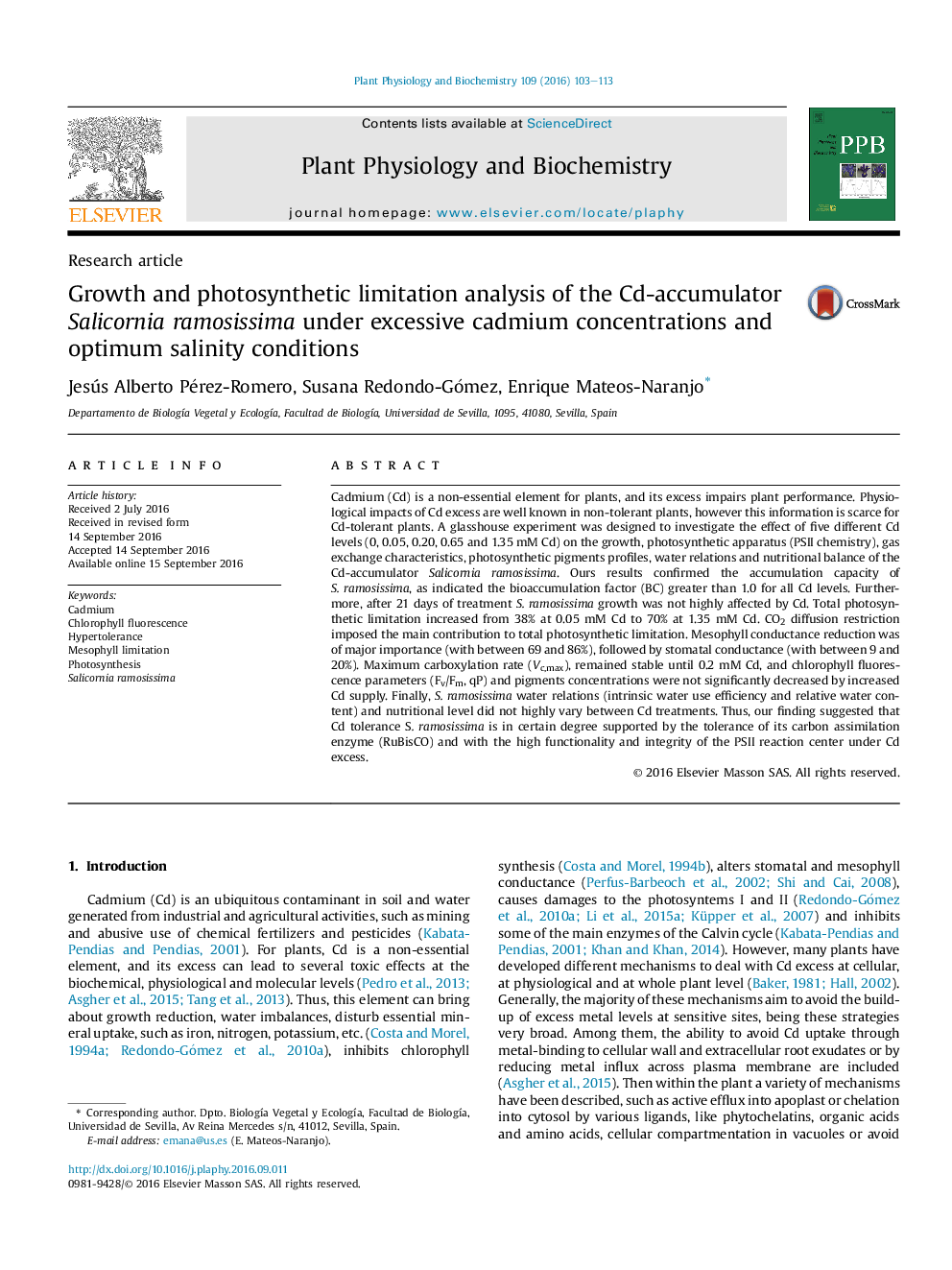| Article ID | Journal | Published Year | Pages | File Type |
|---|---|---|---|---|
| 5515627 | Plant Physiology and Biochemistry | 2016 | 11 Pages |
â¢Effects of excessive cadmium concentrations on Salicornia ramosissima were analyzed.â¢Cd tolerance was ascribed to a high integrity of the photosynthetic apparatus.â¢Biochemical component (RuBisCO, Vc,max) was highly tolerant to Cd excess.â¢Cd had little effect on photochemical apparatus and pigments profiles.â¢Osmotic adjustment and nutrient uptake regulation reduced Cd impact on water balance.
Cadmium (Cd) is a non-essential element for plants, and its excess impairs plant performance. Physiological impacts of Cd excess are well known in non-tolerant plants, however this information is scarce for Cd-tolerant plants. A glasshouse experiment was designed to investigate the effect of five different Cd levels (0, 0.05, 0.20, 0.65 and 1.35 mM Cd) on the growth, photosynthetic apparatus (PSII chemistry), gas exchange characteristics, photosynthetic pigments profiles, water relations and nutritional balance of the Cd-accumulator Salicornia ramosissima. Ours results confirmed the accumulation capacity of S. ramosissima, as indicated the bioaccumulation factor (BC) greater than 1.0 for all Cd levels. Furthermore, after 21 days of treatment S. ramosissima growth was not highly affected by Cd. Total photosynthetic limitation increased from 38% at 0.05 mM Cd to 70% at 1.35 mM Cd. CO2 diffusion restriction imposed the main contribution to total photosynthetic limitation. Mesophyll conductance reduction was of major importance (with between 69 and 86%), followed by stomatal conductance (with between 9 and 20%). Maximum carboxylation rate (Vc,max), remained stable until 0.2 mM Cd, and chlorophyll fluorescence parameters (Fv/Fm, qP) and pigments concentrations were not significantly decreased by increased Cd supply. Finally, S. ramosissima water relations (intrinsic water use efficiency and relative water content) and nutritional level did not highly vary between Cd treatments. Thus, our finding suggested that Cd tolerance S. ramosissima is in certain degree supported by the tolerance of its carbon assimilation enzyme (RuBisCO) and with the high functionality and integrity of the PSII reaction center under Cd excess.
